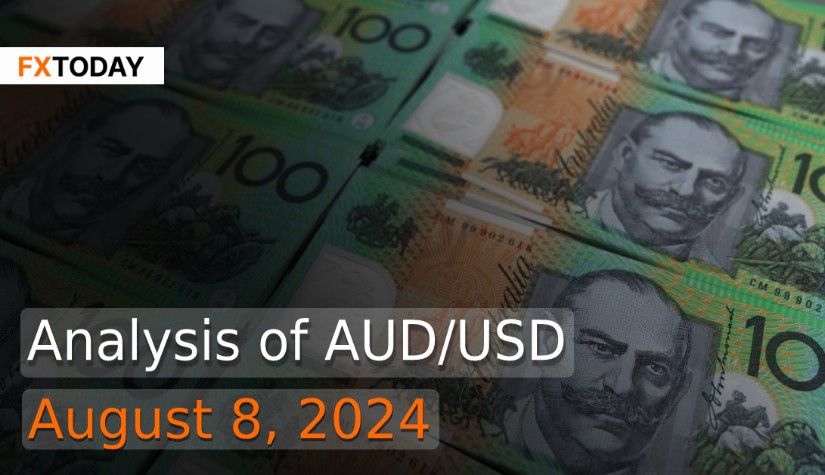RBA Holds Rates Steady, Signals Prolonged High Rates Amid Cooling Inflation
The Reserve Bank of Australia (RBA) maintained its interest rate at 4.35% for the sixth consecutive meeting on Tuesday. This decision aligns with expectations as inflation rates showed signs of cooling, though they remain above the target range of 2-3%. The RBA emphasized the need for tight monetary conditions to manage persistent inflation and did not rule out future rate increases, although it did not explicitly mention this possibility in its statement.
Despite high interest rates, Australia's labor market has stayed strong, which has kept inflation resilient. The RBA projects that inflation will fall within its target range by mid-to-late 2025 and expects rates to remain high until then. Analysts predict that the RBA will likely delay any rate cuts until early 2025.
RBA Governor Michele Bullock reiterated the central bank's hawkish stance in a speech, emphasizing the importance of controlling inflation despite the potential unpopularity of raising rates. Bullock also highlighted the economic opportunities in regional Australia from renewable energy investments, despite challenges posed by climate change.
Following the RBA's decision, the Australian dollar strengthened slightly. Markets had initially priced in a potential rate cut by November but adjusted their expectations following the RBA's unexpectedly hawkish messaging.
Australian consumer price index (CPI) inflation rose 3.8% year-on-year in the second quarter, as expected, while core inflation, excluding volatile items, fell to 3.9%. Quarter-on-quarter, CPI inflation grew 1%, and core CPI inflation grew 0.8%, below the expected 1%. The data suggests that while inflation remains high, it shows signs of cooling.
Other economic indicators showed resilience. Retail sales in June grew by 0.5%, surpassing expectations of 0.2%. Australia's trade surplus also grew to A$5.59 billion in June, driven by a 1.7% increase in exports, although the surplus remains near four-year lows due to reduced demand from China.
Meanwhile, the Australian Prudential Regulation Authority (APRA) will maintain strict home loan lending rules due to ongoing risks from household debt and above-target inflation. The APRA requires lenders to assess borrowers' repayment capacity at an interest rate at least 3 percentage points higher than the prevailing rate. Home prices in Australia increased for the 18th consecutive month in July, up 0.5%, although three capital cities saw declines, indicating a potential cooling in the housing market.
The U.S. dollar strengthened slightly on Wednesday, partly due to expectations that U.S. economic growth may not decline as severely as feared. Initially, concerns of a recession and weak labor market data had increased bets on significant Federal Reserve rate cuts. However, traders have now adjusted their expectations, with a 70% chance of a 50 basis point rate cut in September, down from 85% earlier in the week. Goldman Sachs analysts noted increased market stress but no major disruptions requiring policy intervention.
The average rate for a 30-year fixed mortgage fell to 6.55%, the lowest in 15 months, offering relief to homebuyers in a pricey housing market. Despite this, only 17% of people in Fannie Mae’s housing sentiment index believe it's a good time to buy a home, and 35% prefer renting, the highest since 2011.
The lower mortgage rates have led to a surge in refinancing applications, reaching their highest level in two years, with refinancing now making up 41.7% of all loan applications. However, home purchase activity remains constrained by low inventory and high prices. While many mortgages have high-interest rates from recent origins, a majority still have rates below 4%, indicating that rates would need to drop significantly to make refinancing or buying new homes appealing to most homeowners.
Analysts at Wells Fargo expect the upcoming July Consumer Price Index (CPI) report to show continued slowing inflation, indicating significant progress toward the Federal Reserve's target. They anticipate further declines in shelter inflation and core goods prices, and foresee inflation continuing to subside, driven by increased labor force growth and decreasing worker demand, which reduce labor costs.
Additionally, weakening consumer demand, especially for discretionary items, is helping to push prices back to pre-pandemic levels. While core Personal Consumption Expenditures (PCE) inflation may remain steady through the year-end, they expect it to align with the Federal Open Market Committee's (FOMC) target.
The analysts believe that the Fed, considering current labor market conditions, may see inflation as close enough to target and could start a rate-cutting cycle at its next meeting. Meanwhile, interest rate futures now suggest the Fed will cut its policy rate by a full percentage point by year-end, starting with a half-point reduction next month. This could lead to the AUD/USD pair trading within a broad range, with the Australian dollar's gains expected to remain constrained over the medium term.
Data for Technical Analysis (15Min) CFD AUD/USD
Resistance : 0.6562, 0.6564, 0.6567
Support : 0.6556, 0.6554, 0.6551
15Min Outlook
Source: TradingView
Buy/Long 1 If the support at the price range 0.6551 - 0.6556 is touched, but the support at 0.6556 cannot be broken, the TP may be set around 0.6562 and the SL around 0.6549, or up to the risk appetite.
Buy/Long 2 If the resistance can be broken at the price range of 0.6562 - 0.6567, TP may be set around 0.6575 and SL around 0.6554, or up to the risk appetite.
Sell/Short 1 If the resistance at the price range 0.6562 - 0.6567 is touched, but the resistance at 0.6562 cannot be broken, the TP may be set around 0.6554 and the SL around 0.6569, or up to the risk appetite.
Sell/Short 2 If the support can be broken at the price range of 0.6551 - 0.6556, TP may be set around 0.6546 and SL around 0.6564, or up to the risk appetite.
Pivot Points Aug 8, 2024 06:47AM GMT
|
Name
|
S3
|
S2
|
S1
|
Pivot Points
|
R1
|
R2
|
R3
|
|---|---|---|---|---|---|---|---|
| Classic | 0.6545 | 0.6551 | 0.6554 | 0.6559 | 0.6562 | 0.6567 | 0.657 |
| Fibonacci | 0.6551 | 0.6554 | 0.6556 | 0.6559 | 0.6562 | 0.6564 | 0.6567 |
| Camarilla | 0.6555 | 0.6556 | 0.6557 | 0.6559 | 0.6558 | 0.6559 | 0.656 |
| Woodie's | 0.6545 | 0.6551 | 0.6554 | 0.6559 | 0.6562 | 0.6567 | 0.657 |
| DeMark's | - | - | 0.6557 | 0.6561 | 0.6565 | - | - |
Sources: Investing 1, Investing 2
















